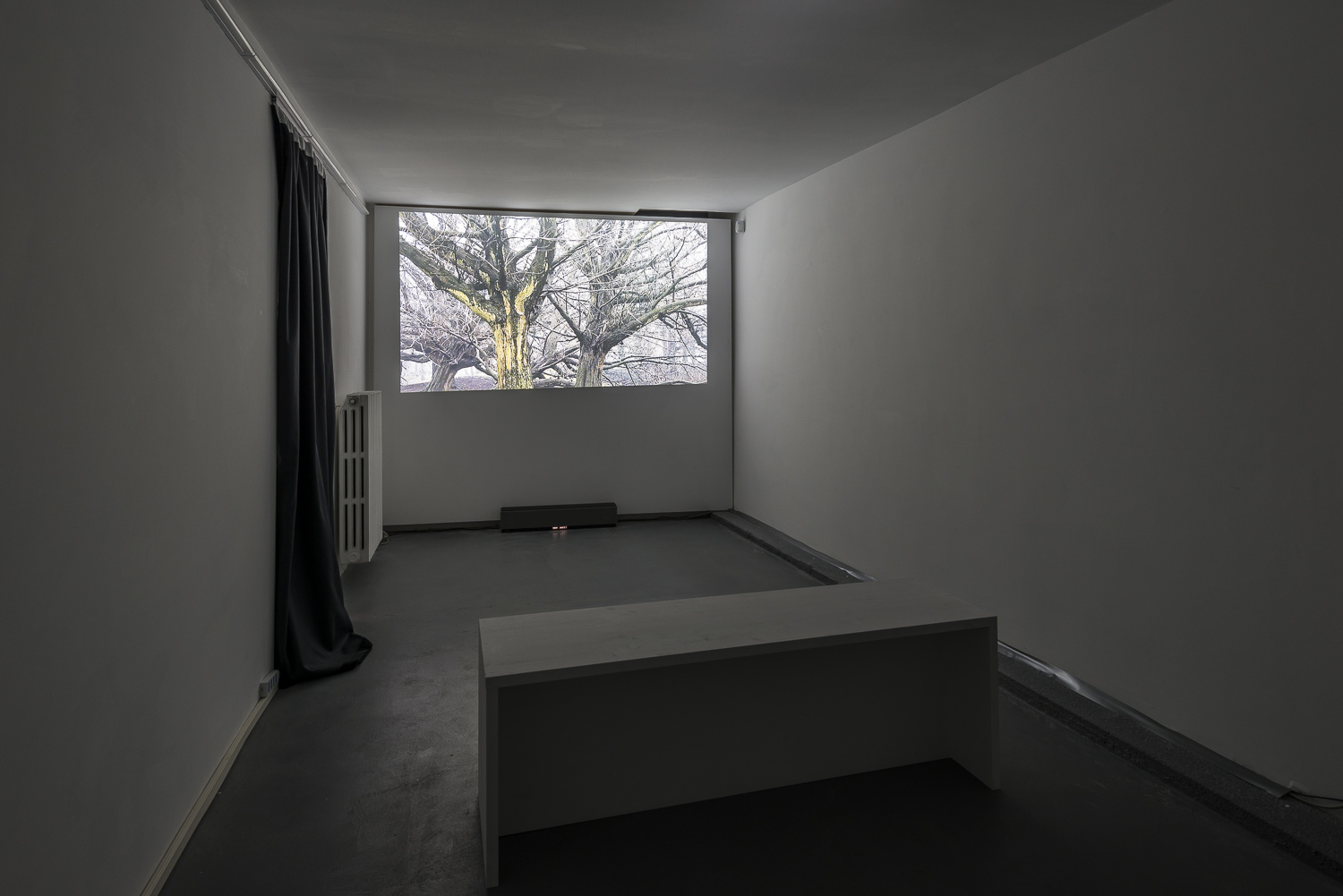Long Time Between the Eyelash and the Brain
Critical text for Long Time Between the Eyelash and the Brain, a solo exhibition of the Lithuanian artist Eglė Budvytytė. AlbumArte, Rome, September – November 2017.

Shaking Children, 2013; HD video, 05’30’’. In collaboration with Bart Groenendaal.
Ph. Sebastiano Luciano, courtesy AlbumArte.
The exhibition Long Time Between the Eyelash and the Brain wants to provoke reflection upon the historical and social time that marks our movements, our rhythms and our actions, creating temporary voids where imagination takes over.
“The true site of experience can be neither in discourse nor in language, but rather in the space between them”. Giorgio Agamben defines this space as the site of original experience, of infancy. “It is not strictly infancy itself, but rather the trace that human infancy leaves on language. It is this split between language and discourse which exclusively and fundamentally characterizes human language.”[1] Indeed, Lithuanian artist Eglė Budvytytė investigates the space that exists between a thought and its conception: this impulse is free from superstructures and brings one closer to that stage of unconsciousness that is typical of “play”, to use Agamben’s word, the only way to avoid homologation and conditioning of society.

Magicians, 2011; HD video, 05’53’’.
Ph. Sebastiano Luciano, courtesy AlbumArte.
In a world that is more and more governed by sequence, and themes such as illusion, freedom and imagination emerge with alternate rhythms characterizing different contexts. As driven by a voice off, collectives and individual realities challenge conventions and operate contrary to the rules imposed. As well as imagination, the body becomes an instrument to challenge codified behaviours, to remind everyone that our strength resides in fantasy. The “Société de contrôle” theorized by Deleuze in his visionary essay written in 1990[2], represents only the first step from which to emerge in order to reach a new reality whose sometimes surreal traits show us how although everyone follows different rhythms and different paths, we nonetheless share a common goal: freedom.

Secta, 2006; Video, 05’54’’.
Ph. Sebastiano Luciano, courtesy AlbumArte.
The selection of four video artworks is arranged following a narrative path. As the video Secta (2006) stands as a counterpoint to the imaginary universe of Magicians (2011), the reckless body movement of the children in Shaking Children is linked to the strict regulations that drive the man’s actions in As if you are catching a bomb (both works are realized in 2013 in collaboration with Dutch artist Bart Groenendaal). Each video delivers an imaginary reality. The space that is revealed is like a sphere surrounding the characters; as in Structuralism thinking, the action depends almost exclusively on the video’s fictional environment rather than on the real space from which it is born. The action originates from the reality that is narrated, and words become central to the understanding of the work itself.

As If You Are Catching a Bomb, 2013; HD video, 16’; In collaboration with Bart Groenendaal.
Ph. Sebastiano Luciano, courtesy AlbumArte.
The voice over becomes the main instrument to convey moving images, except for the video Shaking Children where the immersion in a surreal atmosphere is more straightforward. The spectator perceives a slip between the reality of the images projected and the reality created by the warm feminine voice. The story, although brief, plays a central role for the understanding of a fragmentary and ambiguous reality that is still far more compelling than the everyday life. In her artworks, the artist shows an exceptional ability in blending the boundaries of the real and the potential visibility of the imaginary world: these psychological portraits, rather than simply recounting reality, stress the expressive potential of one’s imagination.
The work of Eglė Budvytytė appears as notes for mental processes, personal traces of appearances. We can perceive a tormented consciousness of the world we live in and the hallucinatory features of someone trying to give voice to that which is inexpressible.
